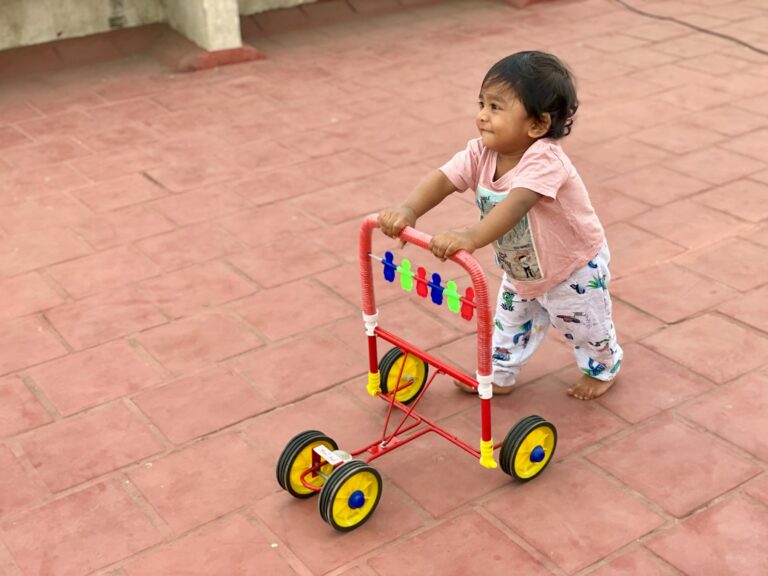A child’s world, often full of numbers—calculating pocket money, telling the time, sorting snacks into equal groups—can suddenly become a maze if dyscalculia is part of the picture. Parents, you might notice the struggle isn’t just about “not liking maths.” Does your child seem lost when asked to count small groups? Do they freeze when handling coins, or does simple addition create tears? These daily snags quickly feel overwhelming, not just at school but in play or family routines. Dyscalculia is far more than just mathematical confusion: it has deep neurological roots, unique signs, and, importantly, practical ways to support your child’s learning and self-confidence. The journey involves understanding what dyscalculia truly is, identifying the subtle signs, knowing what causes it, and learning strategies—both at home and at school—that can transform your child’s experience with numbers. Ready to unravel how dyscalculia works, how it appears, and how you can make a genuine difference each day?
Understanding Dyscalculia
What Exactly Is Dyscalculia?
Imagine wrestling with numbers, not just once but every day. Dyscalculia is a neurodevelopmental disorder—a specific learning difficulty tied directly to how the brain handles mathematics. Even children with average or above-average intelligence, given good teaching and plenty of enthusiasm, may find number tasks baffling. The underlying reason? Key zones in the brain, especially the intraparietal sulcus, process number sense differently. This isn’t a lack of trying, nor is it laziness. Instead, dyscalculia is a mismatch in how numerical information is absorbed, handled, and remembered.
- Persistent struggles with arithmetic
- Trouble understanding mathematical symbols
- Difficulties with spatial reasoning as it relates to math
Dyscalculia stands apart from the common “I don’t like maths” grumbles. Here, no amount of rote practice is enough, and the difficulty stays, even as classmates catch on quickly.
How Common Is Dyscalculia, And Why Is Early Awareness So Important?
Studies estimate that 3-6% of children and adults may have dyscalculia—but numbers vary by how it’s checked. While it’s usually flagged more often in boys, girls are equally affected—sometimes it simply hides beneath the surface. Early awareness does not just reduce frustration: it opens pathways to targeted support and eases the emotional pressure your child might face. Allowing mathematical stumbles to persist, whether through misunderstanding or stigma, can damage a child’s sense of self-worth.
Spotting the signs early means:
- Timely intervention and specialized support
- Support for emotional health
- Reduction of negative labels and self-doubt
Why Dyscalculia Often Gets Misread
How often has a parent or teacher said, “Just try harder, do more practice”? But when the brain processes numbers in a fundamentally different way, repetition doesn’t always help. The signs can appear subtle. Maybe your child learns to count later than expected or avoids simple games involving scores and quantities. Often, these signs overlap with usual learning struggles or look like signs of other issues (anxiety, attention difficulties). And since children are taught to read before complex maths, literacy hurdles get noticed first—leaving dyscalculia in the shadows.
What Makes Dyscalculia Different From Ordinary Maths Problems?
A bad maths grade might just reflect missed classes, poor teaching, or a simple loss of confidence. Dyscalculia, however, brings persistent and unique difficulties:
- Constant confusion with number sense
- Difficulty estimating quantities or comparing numbers
- Inconsistent performance even after tailored help
Children facing straightforward maths hurdles often improve with focused teaching. With dyscalculia, though, those hurdles rarely disappear on their own.
Recognising The Signs: From Preschool To Adulthood
Early Red Flags
A preschooler who cannot reliably count toys or match numbers to sets? That’s one signal. Perhaps they’re always guessing, skipping numbers in a sequence, or struggling with step-by-step tasks—even beyond counting. These things can be tricky to spot, especially as every child develops differently. If these difficulties linger after peers seem comfortable, consider a closer look.
The School Years: Where The Gap Widens
Clocks, calendars, or the simple act of recalling five plus three—it all feels like a mountain climb for a child with dyscalculia. They may need ages to finish homework, forget maths facts after repeated practice, and grow increasingly anxious or frustrated. Emotional reactions are common: avoidance, nervousness before maths class, or even saying, “I’m just not smart.” Look for peers forging ahead while your child seems stuck at the start line.
Beyond School—Adolescence And Adulthood
The impact of dyscalculia doesn’t fade with age. For the adolescent, schoolwork becomes even more challenging: algebra and geometry can seem like impossible codes. As an adult, even daily life—budgeting, time management, following schedules, or reading bills—can trigger stress and avoidance. Perhaps the discomfort leads to career choices that dodge anything “numerical.”
Emotional Ramifications
Repeated setbacks can fuel math anxiety and low self-esteem. Self-doubt seeps in, curbing confidence well beyond school. Creating a positive, supportive environment—with focus on personal improvement rather than perfection—can make all the difference in nurturing both resilience and motivation.
Spotting Dyscalculia Through Everyday Tasks
A pattern of small errors is often telling. Losing count when moving beads, mixing up the sequence of steps in simple instructions, or struggling to link numbers to quantities—these are all quiet clues. Difficulty recognizing “3+4 = 4+3” as the same, or persistent trouble learning basic number relationships, can shine a light on dyscalculia.
Unpacking The Causes And Risk Factors
The Brain’s Blueprint: Genetics And Structure
Dyscalculia is anchored in the architecture and wiring of the brain. The intraparietal sulcus, which manages number sense, often shows differences in those affected. Genes play a part—sometimes more than one—so the risk may travel in families.
How The Mind Processes Numbers
Working memory, or the ability to hold moving pieces of information at once, is often affected. Visualising numbers, placing them on mental number lines, or handling spatial aspects (imagine arranging blocks or shapes in your mind) might feel muddled. Weak number sense, which is the “instinct” for quantities and patterns, is often present from early years.
Educational And Environmental Influences
Sometimes poor teaching or scarce resources contribute to a child’s difficulties, though alone they don’t cause dyscalculia. Stress, lack of support, or psychological difficulties—like attention issues—can magnify existing struggles.
More Than One Difficulty At A Time: Co-Occurring Conditions
Dyscalculia can accompany other learning differences, especially dyslexia and ADHD. When more than one challenge overlaps, it’s essential to tailor help, focusing on both maths and broader academic or behavioural needs.
Types And Subtypes Of Dyscalculia
Developmental Vs Acquired
Sometimes, dyscalculia is visible from childhood—the brain simply develops this way. Rarely, a neurological event such as a stroke can cause “acquired dyscalculia” later in life, erasing previously mastered skills.
The Different Faces Of Dyscalculia
- Visual-spatial dyscalculia: Difficulty “seeing” numbers or visualising where they go
- Procedural dyscalculia: Trouble remembering and applying the right steps for maths problems
- Verbal dyscalculia: Struggles with maths terms, word problems, or recalling maths facts
Every child is unique. Pinpointing the subtype means interventions can be even more precise and effective.
Diagnosing Dyscalculia: What Parents Can Expect
Who To Turn To
Professionals such as educational psychologists or neuropsychologists coordinate assessments, often working alongside teachers and, sometimes, speech-language specialists.
Assessment Tools And Criteria
A clear diagnosis requires evidence: persistent and significant number difficulties, clearly beyond what’s usual for the child’s age or learning background, despite quality instruction. Evaluations often include:
- Standardised maths tests
- Cognitive examinations for working memory and spatial skills
- Observations within classroom settings
The Value Of Comprehensive Assessments
A thorough psychoeducational review clarifies whether dyscalculia is present, distinguishes it from similar challenges, and develops insight into your child’s strengths and weaknesses—a roadmap for support.
Ruling Out Other Possibilities
Diagnosing professionals check for intellectual disability, language barriers, or weak instruction, making sure the problem is truly dyscalculia and not something else.
Why Early Is Better: Screening And Quick Responses
Spotting symptoms early, even as young as age three, optimises the chances that support will be successful. Short monthly questionnaires can help parents and health professionals catch warning signs before they grow bigger.
Dyscalculia And Other Learning Difficulties
Dyscalculia Vs Dyslexia
Sometimes called “maths dyslexia,” dyscalculia is actually quite distinct. Dyslexia targets reading and language, while dyscalculia is all about numbers and sums. That said, both may involve processing speed or memory struggles, often requiring overlapping support.
Dyscalculia And ADHD
While ADHD is about attention, impulsivity, and hyperactivity, dyscalculia concerns handling numbers. Yet, poor focus and working memory can make both conditions harder if they coexist.
Maths Anxiety, Language Issues, Or Something Else?
Anxiety with maths, broader language problems, or visual-spatial weaknesses may look similar, but they require different interventions. Precision in the diagnosis makes all the difference to effective support.
When More Than One Difficulty Appears
Co-morbidity is common—dyscalculia may overlap with other learning or behavioural issues. Accurate, early, and broad assessment helps ensure every child receives wide-ranging support for every area of need, not just the maths challenges.
Teaching And Supporting A Child With Dyscalculia
Multisensory Methods And Visual Tools
Learning is deeper when it uses many senses together. Showing concepts with real objects, tactile blocks, colourful diagrams, and even songs or movement can help children “feel” numbers.
Learning With Hands-On Materials
Base-ten blocks, counting beads, and sturdy counters put abstract maths into a child’s hand—making invisible ideas visible and concrete. Games and puzzles offer repetition without frustration.
Apps And Digital Tools
Maths apps, tailored software, and interactive games allow children to learn and practice at their own pace. Immediate feedback and “virtual manipulatives” bridge the gap between concept and understanding.
Simple Steps, Clear Goals
Dividing bigger tasks into “mini goals” avoids overwhelming the child and builds small, real wins. Every step forward—no matter how small—is a step towards confidence.
Praising Progress
Notice effort and bravery—rather than just right or wrong answers. Mistakes are stepping stones; improvement matters more than perfection. Building a “growth mindset” has long-term rewards.
Official Support And Accommodations
Individual Education Plans (IEPs) or “504 plans” (where available) spell out classroom adjustments: extra time, simplified steps, or permission to use calculators or visual tools. Collaboration between parents, teachers, and professionals is vital for real, lasting progress.
Specialised Teaching And Tutoring
Whether in special sessions at school or with private tutors, children respond best to teaching matched to their personal profile—leveraging strengths, not only addressing weaknesses.
Supporting Your Child At Home And Beyond
Emotional Nurturing
Trust is the foundation. Tell your child: having trouble with numbers does not reflect their overall intelligence. Listen patiently to their struggles, validating feelings of frustration. Open, regular conversations can build lasting resilience and hope.
Building Maths Confidence Everyday
Turn shopping, cooking, or even travelling into short maths adventures: counting fruit, measuring ingredients with cups, or matching socks while talking about pairs. Use one-step directions and calm, positive reinforcement. Visual cues, like pictograms or gesture games, break tasks into manageable parts.
Helping Teens And Adults
Encourage independence—let them use planners, digital timers, and apps to organise routines. Support advocating for help in new situations, especially in further studies or the workplace.
Rights, Protections, And Accommodations At Work
No child grows up fast—some adults still benefit from written tasks, extra calculation time, or digital support tools in professional settings. Knowing about legal rights (like ADA or Section 504 in some countries) helps build confidence to request support.
Lifelong Coping Strategies
Autonomy is key: teach your child to choose supportive tools, clarify instructions, and be brave enough to ask questions. Celebrate every new skill. Each small win matters—highlight persistence, not “getting it perfect.”
New Research And Future Horizons
What Science Reveals
Advanced brain scans (like functional MRI) show that areas responsible for number processing light up differently in dyscalculia. Reduced grey matter or unusual connections are common. Understanding these changes brings hope for newer, targeted interventions.
Innovations On The Horizon
Exciting tools are emerging: computerised cognitive exercises, adaptive “smart” educational apps, and even non-invasive brain stimulation. Yet, multisensory learning and hands-on activities still stand out for nearly every child diagnosed.
Advocacy And Awareness
Parents and teachers stand at the front lines. Early identification, proactive support, and sharing experiences not only break stigma but also connect families to vital resources and support networks in their community.
Key Takeaways
- Dyscalculia is a distinct, lifelong learning difference focused on number and maths skills, rooted in unique brain function and genetic factors.
- Early identification and personalised, multisensory strategies can transform both academic and emotional growth.
- Positive reinforcement, patience, and family-school collaboration make a powerful difference to a child’s self-esteem.
- Trust, open conversation, and resilience are more important than chasing perfection—a strong “growth mindset” paves the way.
- Resources, professionals, and new interventions are available to support you; for tailored advice and free health tools, download the Heloa app.
Questions Parents Ask
Can dyscalculia affect a child’s life outside of school?
Absolutely. Dyscalculia can touch everyday situations—handling money, reading clocks, helping in the kitchen—just as it does in the classroom. These hurdles are not about intelligence or motivation, but about a unique way of dealing with numbers. Calm routines and practical aids, like breaking tasks into easy steps, can build confidence for your child.
Is dyscalculia the same as “math dyslexia”?
“Math dyslexia” is a common phrase, but technically, dyscalculia and dyslexia are different. Dyslexia affects reading and language, while dyscalculia is specifically about numerical concepts and arithmetic. Each condition needs its own type of support, though sometimes they do overlap.
Can dyscalculia co-exist with other learning difficulties?
Yes. A child with dyscalculia might also experience dyslexia or ADHD, among other challenges. This can make schoolwork more complicated, but it doesn’t define your child’s future. An individual approach, considering each child’s unique abilities, is the best way forward—remember, professional guidance can help tailor solutions for your family.
Further reading:









